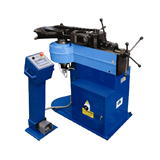Key Takeaways
- Shift from "break-fix" to proactive maintenance: Instead of waiting for equipment to fail, implement a scheduled maintenance program based on operating hours or condition monitoring. This is the single most effective way to prevent unplanned downtime.
- Empower your operators: Train your machine operators to perform routine daily checks (like checking fluid levels, looking for vibrations, and cleaning sensors). They are your first line of defence and can spot problems long before a maintenance technician can.
- Optimise your critical spares inventory: Don't wait for a breakdown to discover a critical part has a six-week lead time. Identify the essential spares that have the biggest impact on downtime and ensure they are always in stock.
- Conduct root cause analysis (RCA) on every failure: When a machine stops, don't just fix the immediate problem. Use a simple "5 Whys" analysis to understand the underlying cause and implement a permanent solution to prevent it from happening again.
- Leverage your existing CMMS properly: Your Computerised Maintenance Management System is more than a work-order tool. Use it to track failure trends, monitor asset health, and make data-driven decisions about your maintenance strategy.
- WHS Compliance, Not Just Uptime: Your proactive maintenance program is a critical part of your legal duty of care under WHS laws to provide safe equipment and manage risk.
Introduction: The uptime imperative in Australian industry
In Australia's competitive industrial sector, every minute of production counts. With rising energy costs, ongoing supply chain pressures, and a tight labour market, the last thing your business needs is an unplanned shutdown. According to a recent industry report, unplanned downtime can cost Australian manufacturers up to 3% of their annual revenue, a staggering figure that directly impacts your bottom line. While the temptation is to solve reliability issues by investing in new, state-of-the-art machinery, tight capital budgets often make this impossible.
The good news is that the most significant gains in equipment uptime don't come from a new purchase order. They come from optimising the processes, people, and systems you already have. This article provides five practical, low-cost strategies to help you boost the reliability and performance of your existing assets, reduce costly downtime, and build a more resilient and profitable operation.
Shift from a reactive to a proactive maintenance culture
The most common, and most expensive, approach to maintenance is "run to failure." You wait for a machine to break, then you scramble to fix it. A proactive culture, however, focuses on preventing failures before they happen.
A proactive maintenance program involves scheduling regular, planned maintenance tasks based on equipment usage (e.g., every 500 operating hours) or condition monitoring. This allows you to perform maintenance during planned shutdowns, rather than in the middle of a critical production run.
- Start small: You don't need to implement a complex program overnight. Choose one of your most critical machines and develop a simple scheduled maintenance checklist.
- Focus on the fundamentals: Your initial checklists should cover basic but critical tasks like lubrication, calibration, filter changes, and inspections for wear and tear.
- Use your operators: Your machine operators have the most hands-on time with the equipment. Train them to be your eyes and ears on the plant floor.
Empower your operators with routine checks
Your maintenance technicians are a valuable, limited resource. Don't waste their specialised skills on simple tasks that an operator could perform. By training your machine operators to conduct routine daily or pre-start checks, you create a sense of ownership and can catch up to 80% of potential issues at their earliest stage.
This approach, often called Autonomous Maintenance, involves creating a simple checklist for each machine that operators complete at the start of their shift.
A realistic scenario: The seized bearing
A critical conveyor motor at a food processing plant in Western Sydney seizes mid-shift, stopping the entire packaging line for four hours. The cause? A bearing failed due to a lack of lubrication. The fix required two technicians and resulted in thousands of dollars of lost production.
The proactive solution: An operator, equipped with a 5-minute pre-start checklist, would have checked the bearing's grease point. They would have noticed it was dry and either applied grease themselves or created a low-priority work order for the maintenance team. This simple, 30-second check would have prevented a four-hour shutdown.
Optimise your critical spares management
Having the right spare parts on hand is crucial for a speedy recovery. However, holding a massive inventory of spares ties up capital and space. The key is to be strategic.
A critical spares analysis helps you identify the parts that have the longest lead times and would cause the most significant downtime if they failed.
- Analyse your history: Use your maintenance records to identify which parts have failed most frequently on your critical machines.
- Talk to your suppliers: Get up-to-date lead times for your most critical components. A part that used to be available next-day might now take weeks to arrive from overseas.
- Prioritise your inventory: Focus your budget on ensuring these critical, long-lead-time spares are always in stock. It’s better to have one critical $2,000 gearbox on the shelf than 200 low-value, readily available sensors.
Conduct a root cause analysis for every failure
When a machine fails, the immediate pressure is to get it running again as quickly as possible. While speed is important, it's vital to also take the time to understand why it failed. Without this step, you are destined to repeat the same failures over and over.
Root Cause Analysis (RCA) doesn't need to be complicated. The "5 Whys" technique is a simple and effective tool. When a failure occurs, gather the operator and maintenance technician and ask "Why?" five times to drill down past the symptoms to the root cause.
- The problem: A hydraulic hose burst.
- Why 1? The hose was abraded.
- Why 2? It was rubbing against a bracket.
- Why 3? The bracket was bent.
- Why 4? A forklift accidentally hit the bracket last week.
- Why 5? The area is a blind spot for forklift drivers.
The fix: Instead of just replacing the hose, the real solution is to install a mirror and safety bollards to prevent future collisions.
Use your maintenance software (CMMS) effectively
Many businesses have a Computerised Maintenance Management System (CMMS) but use it as little more than a digital diary for work orders. Your CMMS is a powerful data-gathering tool that can drive your entire reliability strategy.
Use your system to track key metrics that give you insight into your equipment's health and the effectiveness of your maintenance program. Key metrics include:
- Mean Time Between Failures (MTBF): How long, on average, does a machine run before it fails? Your goal is to see this number increase over time.
- Mean Time To Repair (MTTR): How long, on average, does it take to fix a machine once it has failed? A high MTTR might indicate a lack of training or missing spare parts.
By regularly reviewing this data, you can move from making gut-feel decisions to making data-driven choices about where to focus your limited maintenance resources for the biggest impact on uptime.
More than uptime: Your WHS duty of care
While unplanned downtime hurts your bottom line, a catastrophic failure of poorly maintained equipment can have far more severe consequences. In Australia, the conversation around maintenance isn't just about operational efficiency; it's a fundamental issue of workplace safety and legal compliance. A neglected, unreliable machine isn't just a production risk, it's a potential breach of your legal obligations.
Under our national Work Health and Safety (WHS) laws, every business has a primary duty of care to ensure, so far as is reasonably practicable, the provision and maintenance of safe plant and structures. The proactive strategies discussed in this article, such as scheduled maintenance plans and operator pre-start checks, are your most effective tools for meeting this duty.
A well-kept maintenance log in your CMMS isn't just a record of repairs; it's critical evidence that you are actively identifying and controlling hazards. During a SafeWork inspection or after a safety incident, this documentation is your first line of defence. Therefore, shifting to a proactive maintenance culture isn't just a strategy for improving profitability; it's an essential part of responsible risk management that protects your people, your reputation, and your business from serious harm.
Conclusion
Improving your plant's uptime isn't about the capital you spend, but the culture you build. Each of these five strategies, from empowering your operators on the floor to using data to learn from every failure, is a low-cost step towards a more proactive and resilient operation. The journey to world-class reliability doesn't start with a quote for new equipment; it starts by choosing one machine and committing to a smarter way of maintaining it.






